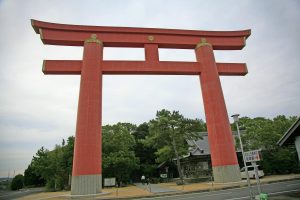Learning from Kojiki (1) 2018/01/15
According to Kojiki, Amenominakanonushi appeared first among all deities in Japan. This deity keeps standing at the center of deities but does not do anything else. There is no explanation available about his role or performance. However he is considered as the most precious deity. This situation remind us of the fact how ordinary Japanese people feel about Emperor.
Besides Amenominakanonushi, there are two important deities, Takamusubi and Kamimusubi, both are deities of birth, the former for the world of deities and the latter for the world of people.
These three are called as original three deities.
Then five deities followed, including Umashiashikabihikojinokami who is the deity for reeds and molds. It seems unpopular to have deity for reeds and molds, however it probably stands for breeding and continuous reproductive power.
All of deities belonging to above two groups are single deity.
Then seven generations deities followed.
Famous Izanagi and Izanami locate as the seventh generation of this group.
They made a couple and gave birth to original Japanese lands, various deities including the founder of Royal family and the ancestor of all Japanese people.
The point of this story is the fact that the same deities, namely Izanagi and Izanami gave birth not only to people but also to lands and deities. In Japanese mythology, lands, deities and people have the same parent and they are brothers. This is the reason why, in Japan, deities are so close and intimate with people. Also this can explain why Japanese people are so fond of nature including all livings in nature.
Kojiki is so worthy because it explains the bottom of Japanese culture.








